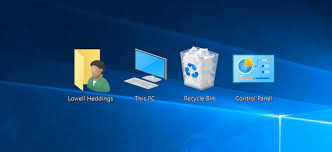Graphical User interface.
A designs based working framework interface that utilizes
symbols, menus and a mouse (to tap on the symbol or pull down the menus) to
oversee connection with the framework. Created by Xerox, the GUI was advocated
by the Apple Macintosh during the 1980s. At that point, Microsoft's working
framework, MS-DOS, required the client to type explicit orders, however the
organization's GUI, Microsoft Windows, is currently the predominant UI for
(PCs). A complete GUI climate incorporates four parts: an illustrations library,
a UI tool compartment, a UI style guide and steady applications. The
illustrations library gives an undeniable level designs programming point of
interaction. The UI tool compartment, based on top of the designs library,
gives application programs instruments for making and dealing with the
discourse components of the windows, symbols, menus, pointers and parchment
bars (WIMPS) interface. The UI style guide indicates how applications should
utilize the discourse components to introduce a steady, simple to-utilize
climate (i.e., "look and feel") to the client. Application program
conformance with a solitary UI style is the essential determinant of simplicity
of learning and use, and along these lines, of use adequacy and client
efficiency.
How does graphical user interface work?
Graphical UI plan standards adjust to the model–view–regulator programming design, what isolates inside portrayals of data from the way in which data is introduced to the client, bringing about a stage where clients are shown what capacities are conceivable rather than requiring the contribution of order codes. Clients interface with data by controlling visual gadgets, which are intended to react as per the kind of information they hold and backing the activities important to finish the client's errand.
Graphical UI testing alludes to the methodical course of
creating experiments to assess the usefulness of the framework and its plan
components. Graphical UI testing devices, which are either manual or robotized
and normally executed by outsider administrators, are accessible under an
assortment of licenses and are upheld by an assortment of stages. Well known
models include: Tricentis Tosca, Squish GUI Tester, Unified Functional Testing
(UFT), Maveryx, Appium, and eggplant Functional.



